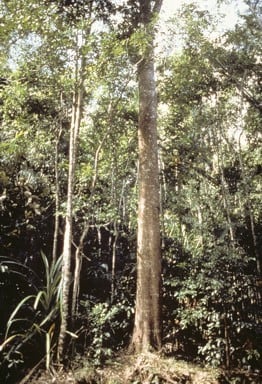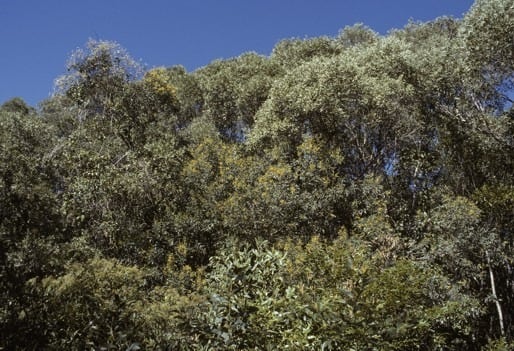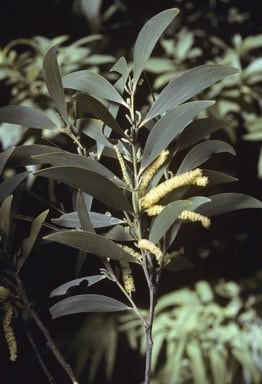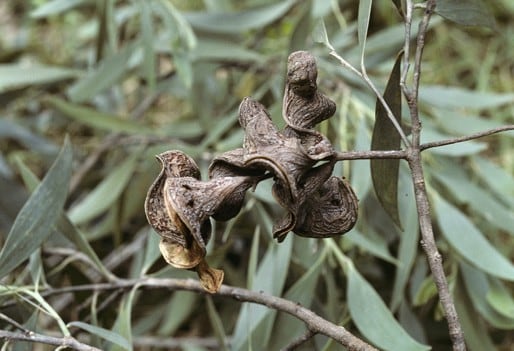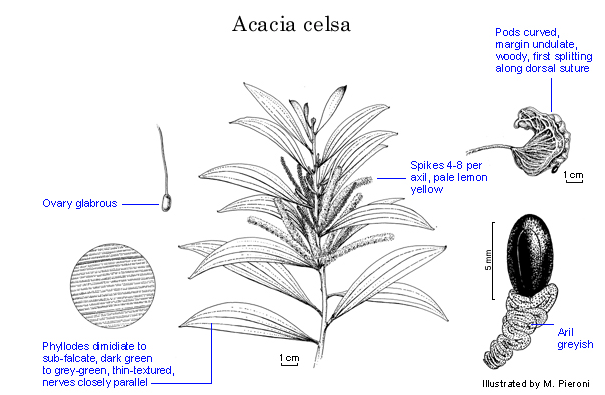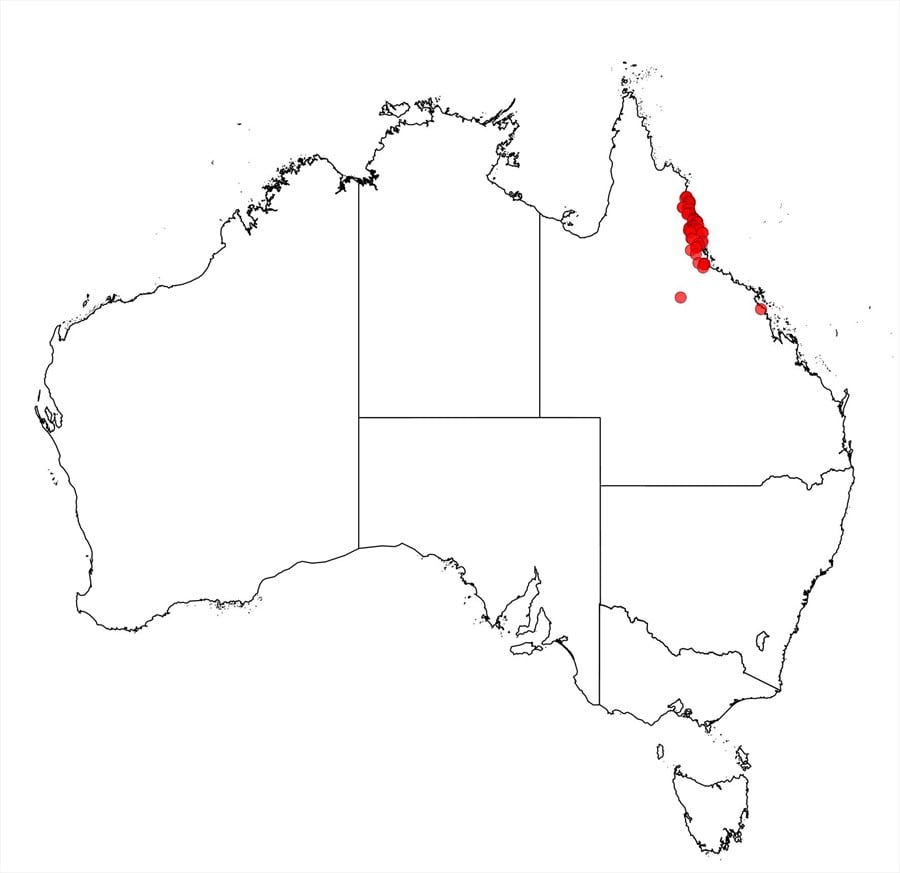Acacia celsa Tindale
WATTLE
Acacias of Australia
Common Name
Brown Salwood
Family
Fabaceae
Distribution
Occurs in north-eastern Qld, from near Cooktown, S to eastern portion of the Atherton Tableland, with disjunct occurrence on Paluma Ra. (NW of Townsville).
Description
Tree 8–30 m high, canopy grey green. Bark shallowly rimose, grey. Branchlets flattened and angled at extremities, glabrous. Phyllodes dimidiate to subfalcate, 5–15.5 cm long, (1–) 1.5–2.5 (–3.5) cm wide, thinly coriaceous, ±dark green to grey green with a slight sheen, glabrous; longitudinal nerves numerous (4–5 per mm), parallel and not anastomosing, 3 or 4 main nerves slightly raised (when dry), broader and more prominent than the rest, 3 or 4 less prominent secondary nerves also present, the minor nerves not or scarcely raised, main nerves commonly confluent with lower margin for a short distance above pulvinus; pulvinus 3–6 mm long. Inflorescences simple, 4–8 per axil; peduncles 4–6 mm long; spikes 3–6 cm long, pale lemon yellow. Flowers 5-merous; calyx gamosepalous, c. 0.5 mm long, dissected for ¼ its length, glabrous; ovary glabrous. Pods oblong to narrowly oblong, undulate (especially the dorsal margin), moderately to strongly curved (sometimes into an open circle), 2–5 cm long, (1–) 1.5–2 cm wide, woody, glabrous, dehiscing along dorsal suture, with ±longitudinal, raised and anastomosing nerves. Seeds oblique to transverse, ±ovate, 3–6 mm long, brown to black; aril greyish cream.
Phenology
Flowers Jan.–May.
Habitat
Grows in clay or loamy clay, commonly over granite, in rainforest habitats.
Specimens
Qld: Double Mountain, N.Byrnes 152 (BRI); Paluma Dam, NW of Paluma, 68.9 km S along T/O to Daintree from Cooktown, M.W.McDonald 2362 & P.A.Butcher (BRI, NSW, PERTH); 15.5 km S of Cooktown-Lakeland road on Daintree Rd to Mossman, M.W.McDonald & B.R.Maslin BRM 7661 (CANB, BRI, NSW, PERTH); 13 km NNE of Tully, J.Moriarty 2964 (PERTH).
Notes
Details of utilisation etc. of A. celsa are given by M.W.McDonald & B.R.Maslin, Austral. Syst. Bot. 13: 37 (2000).
A member of the ‘A. aulacocarpa group’, most closely related to A. aulacocarpa and A. disparrima. It is distinguished from all members of the group by its obviously curved, woody pods with undulate dorsal margins. Other distinctive features include its tall stature, rainforest habitat and large number of spikes per axil. Putative natural hybrids between A. aulacocarpa and A. celsa occur at Paluma Dam, Qld.
Acacia celsa was mentioned in Fl. Australia 11B: 169 (2001) under A. aulacocarpa, but was formally recognized too late to be fully described in that volume.
FOA Reference
Data derived from Flora of Australia Volumes 11A (2001), 11B (2001) and 12 (1998), products of ABRS, ©Commonwealth of Australia
Author
B.R.Maslin, J.Reid
This identification key and fact sheets are available as a mobile application:
URL: https://apps.lucidcentral.org/wattle/
© Copyright 2018. All rights reserved.
